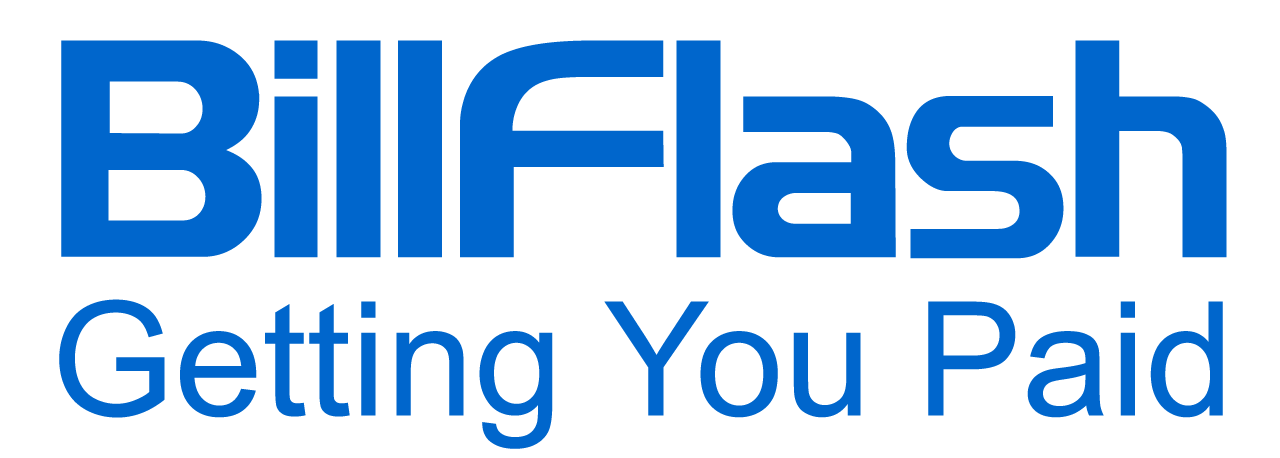Comprehensive revenue cycle management is crucial for financial success. Find out the best practices to implement this 2024!
Rising consumerism, outdated systems, and shifting regulations have created a perfect storm of complexity for healthcare providers. New strategies will be needed to strengthen financial stability and achieve comprehensive revenue cycle management without compromising patient care.
For patients, unclear billing processes and rising cost-sharing have led to confusion and frustration. Healthcare providers have to meet patient expectations for digital access, cost clarity, and frictionless payments. However, many providers face daily roadblocks that add to the financial burden on their offices.
Comprehensive revenue cycle management is critical for healthcare organizations to achieve financial success. It contains the administrative and financial processes used to manage patient revenue – from scheduling initial appointments to collecting final payments. Smooth coordination between front-office and back-office functions is imperative for effective RCM.
Effective RCM leads to sound reimbursement for patient services while maintaining compliance and reducing waste. With rising costs and complex regulations, having an effective RCM strategy is more important than ever in 2024.
Understanding the Current Landscape

Healthcare providers have been implementing transformation initiatives over the past few years to address issues like labor shortages and inflationary pressures. While these efforts have led to some financial improvements, many healthcare providers do not have high-profit margins. Some sectors, like skilled nursing facilities, continue to face weakening financial performance. Changes to Medicaid enrollment during the strong job market have also negatively impacted payer profits. However, some payer segments, like Medicare Advantage and individual insurance, have maintained stronger economic results.
According to research by McKinsey, there is major growth potential for dual-eligible patients who qualify for Medicaid and Medicare. Healthcare profit pools may grow at a Compound Annual Growth Rate (CAGR) of 7% — from $583 billion in 2022 to $819 billion in 2027. Inflation and labor challenges had a hand in hindering profitability in 2023, but experts anticipate a recovery starting this year, driven by margin improvement efforts and reimbursement rate increases.
Revenue cycle management is one of the key areas that will be impacted by these changes. The battle between payers and healthcare providers regarding denied claims presents a major challenge due to frequent denials and complicated administrative processes. More than 1 in 5 providers lose $500,000 in annual revenue because of claim denials.
The challenges related to denied claims as well as the financial impact on healthcare providers are closely linked to how effective comprehensive revenue cycle management is. Successful RCM involves addressing coding accuracy, streamlining office processes, and utilizing technology to minimize claim denials and optimize revenue capture. Healthcare organizations that struggle with revenue cycle management (RCM) are more likely to experience higher rates of denied claims.
Challenges Healthcare Organizations Face
Several factors contribute to the struggle many healthcare organizations have with revenue cycles:
- Payer rules and reimbursement models change all the time – ICD codes, insurance contracts, CMS guidelines. It can be difficult for providers to constantly adapt their RCM strategies.
- More patients have high-deductible plans now. So, there's a greater need for financial counseling and payment plans to cover their responsibility.
- Cyber-attacks and data breaches are also on the rise. Providers need to make security a top priority and ensure systems and staff prevent compliance issues.
- With an aging population, Medicare claim volumes are increasing. This adds even more stress to already strained revenue cycles.
Key Components of Comprehensive Revenue Cycle Management
A well-functioning healthcare revenue cycle is seamlessly connected throughout the entire billing and collection process. Though the specifics may not be the same across all healthcare organizations, there are key elements that play a major role in ensuring everything runs smoothly:
Patient Registration and Insurance Verification
- Getting accurate patient information – insurance details, demographics, pre-authorizations – during registration is crucial. Validating everything upfront prevents claim denials down the road and reduces the pile of follow-up work.
Accurate Coding and Billing Processes
- Using the right ICD, CPT, as well as HCPCS codes is key to maximizing reimbursement for the specific services provided. Staying up to date on the latest billing guidelines through training helps reduce compliance risks and payment delays.
Claims Submission and Tracking
- Submitting clean claims to payers quickly reduces denials and speeds up payments. Tracking status identifies issues early before revenue and cash flow take a hit. It is also important to thoroughly appeal denials to get successful resolutions.
Payment Processing and Collections
- When payments come in, accurately applying them to the right patient accounts is important for proper aging and revenue reporting. Working closely with patients on balances after insurance helps prevent bad debt write-offs.
Embracing Technology for Enhanced RCM
Embracing innovation for comprehensive revenue cycle management involves making the best use of technological advancements and innovative solutions to streamline and improve healthcare financial processes. Some ways innovation can help enhance RCM include:
Integration of Advanced RCM Software
The integration of advanced RCM software offers a strategic approach to streamline financial processes. This involves carefully assessing current systems, RCM platform partner selection, as well as a well-planned implementation to optimize billing accuracy and overall efficiency.
Automation and Artificial Intelligence in Revenue Cycles
AI-powered solutions can take over administrative tasks. Natural language processing helps pull key data from unstructured clinical notes. Machine learning improves prior authorization and coding accuracy over time, and intelligence platforms provide real-time dashboards with key metric tracking and trend analysis. Benchmarks will identify opportunities for improvement, and performance will be managed proactively instead of reactively.
Electronic Health Record (EHR) Systems and Their Impact
Integrated practice management and electronic health record(EHR) systems centralize data and workflows. Automation can help in reducing duplicate manual data entry and errors, while interfaces with billing systems minimize revenue disruptions.
Compliance and Regulatory Considerations

Healthcare regulations at the federal and state levels continue to grow more complex year after year. To avoid penalties and the risks of being audited, comprehensive revenue cycle management platforms must prioritize engaged regulatory compliance across all aspects of the revenue cycle. This means that practices must maintain current knowledge of evolving billing and reimbursement policies set by entities like CMS, Medicaid, insurers, etc.
It is also important to constantly monitor coding practices, follow annual coding guidelines, and avoid improper practices, like upcoding or unbundling. On the claims side, processes and system controls should be implemented to prevent any submissions of charges for ineligible services or patients. Patient financial communications must follow laws regarding fee transparency and prohibitions on balance billing for those who are insured.
As transparency expectations rise, healthcare practices should make sure they provide clear and upfront estimates of out-of-pocket costs. Developing internal auditing capabilities allows healthcare organizations to identify any compliance struggles proactively before external audits take place.
Staff Training and Development
Yes, technology is reshaping many aspects of comprehensive revenue cycle management, but skilled staff remains invaluable for achieving optimal performance. Hiring experienced billing specialists and certified medical coders is a must. Keeping the revenue cycle department fully staffed ensures manageable workloads even with absences or turnover. Once hired, staff should receive regular continuing education on coding changes, payer policy updates, evolving regulations, and new RCM technologies.
Going beyond training, fostering a supportive departmental culture focused on compliance, quality, efficiency, and patient service inspires staff and reduces turnover. Consider cross-training billing and coding staff through programs so they have more insight into interconnected workflows. A training needs analysis can also help uncover role-specific skill or knowledge gaps that practices need to address.
Patient Engagement and Financial Transparency
With the continued rise of high-deductible plans, today's patients carry greater financial responsibility for their care. This requires healthcare providers to engage patients in the billing and payment processes with transparency. Healthcare practices should also educate patients on medical billing and insurance processes. For uninsured patients, provide cost estimators so they can compare different procedure options based on what they can afford. Every patient can benefit from online price transparency tools that will help empower them to estimate potential out-of-pocket costs.
Data Security and Privacy Measures
Protecting sensitive patient and payment data should certainly be a top priority for all healthcare organizations, especially as cyber risks grow. Regular risk analyses should be completed to identify and resolve vulnerabilities in privacy and security posture. Stored and transmitted data must be encrypted based on industry standards, and internal data access should be limited to only those who need it for their role. Strong identity management and access controls with Multi-Factor Authentication (MFA) can protect accounts and systems from unauthorized access. Providing regular security and privacy education to staff on security risks, such as phishing, will make them a stronger defense.
Performance Metrics and Analysis
Data-driven management is important for comprehensive revenue cycle management, but clear metrics have to be defined and monitored to obtain actionable insights. Healthcare organizations should start by establishing relevant key performance indicators. Building performance dashboards allows real-time monitoring of KPI trends to identify any bottlenecks.
Detailed scheduled reports provide a deeper look into revenue cycle health to make better decisions and identify opportunities for improvement. Data analytics techniques help gain insights from performance metrics, which can help in recognizing problems and patterns. Instead of sticking to the current way of doing things, the emphasis should be on making small improvements. These improvements should be based on data and should be an ongoing process.
Lessons Learned From Successful Implementations
- Collaborating with an experienced partner is essential for navigating RCM challenges.
- Detailed planning sessions are crucial for understanding and optimizing existing revenue cycle processes.
- Training and clear communication play a key role in a smooth transition and boost staff confidence.
- Ongoing collaboration with your RCM partner ensures sustained efficiency and addresses evolving needs.
Future Trends and Innovations

While the current comprehensive revenue cycle management best practices are critical now, the field will continue evolving quickly. Healthcare organizations should prepare for major innovations on the horizon:
- More automation of manual tasks like coding, documentation, and claims filing through AI and NLP.
- Real-time claim adjudication that pays at the time of service, not after claim submission.
- Broader adoption of price transparency and financial navigation for patients.
- Shift of revenue cycle data to the cloud.
- Consumer wearables and health apps feeding clinical inputs into revenue cycle systems.
Wrapping Up
Now more than ever, healthcare providers need to stay on top of optimizing their entire revenue cycle. It’s also crucial to keep looking ahead and be open to innovations that could take revenue integrity to the next level. By assessing the landscape and embracing innovations, providers can confidently maximize revenue integrity in 2024 and far into the future. In healthcare, administrative problems often overshadow patient care. But the right RCM partner can change that, and BillFlash is that RCM partner!
Do you want to find out what we can do to elevate your practice by taking control of your RCM? Schedule a demo today!

